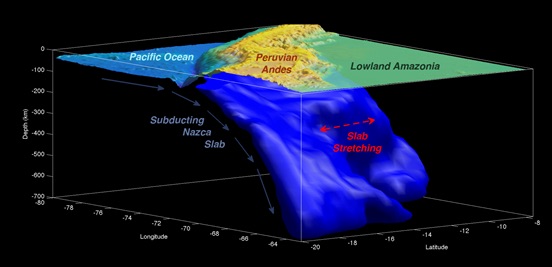Subduction dynamics: slabs in the mantle
Subduction zones are the most prolific producers of seismic and volcanic activity on Earth, yet many aspects of the subduction factory remain poorly understood. Surrounded by plate boundaries Australia has a unique advantageous location for recording earthquakes originating from nearby subduction zones.
Project status
Content navigation
About

Subduction zones are the most prolific producers of seismic and volcanic activity on Earth, yet many aspects of the subduction factory remain poorly understood. For example, the degree and nature of coupling between the subducting slab and its surroundings, the strength of the slab during subduction, how it deforms, and how much water is transported to the deep mantle. Surrounded by plate boundaries Australia has a unique advantageous location for recording earthquakes originating from nearby subduction zones. Various seismic techniques and observational tools can be applied to analyse signals carried by these seismic waves from their source (e.g. guided waves).
Nature of Project(s): Computational, fieldwork and numerical
Several projects exist to study subduction dynamics in such a way from a seismological perspective. Such projects are primarily computer based, and prior experience with Matlab or similar programs would be advantageous. Opportunities to assist in collecting seismic data in the field may also arise during the course of a project.
This is a general project that can be tailored to suit students of any level. Previous work in this area has been published and may be useful for students considering working with us. Any interested students are encouraged to contact the supervisor for more information.
General Background: Seismology, the study of seismic waves, has a wide range of applications of societal importance, from seismic hazards, to discovery of natural resources, to Earth evolution. Through the recording and then analysis of seismic data, which can originate from earthquakes, ocean noise, or man-made sources, seismologists image the structure of the Earth from the surface to the core. Seismic imaging is the only approach that can reveal structure and processes that are both currently active (e.g. faults, earthquakes, volcanoes) and infer those that occurred billions of years ago (e.g. orogenesis and formation of the continents).


